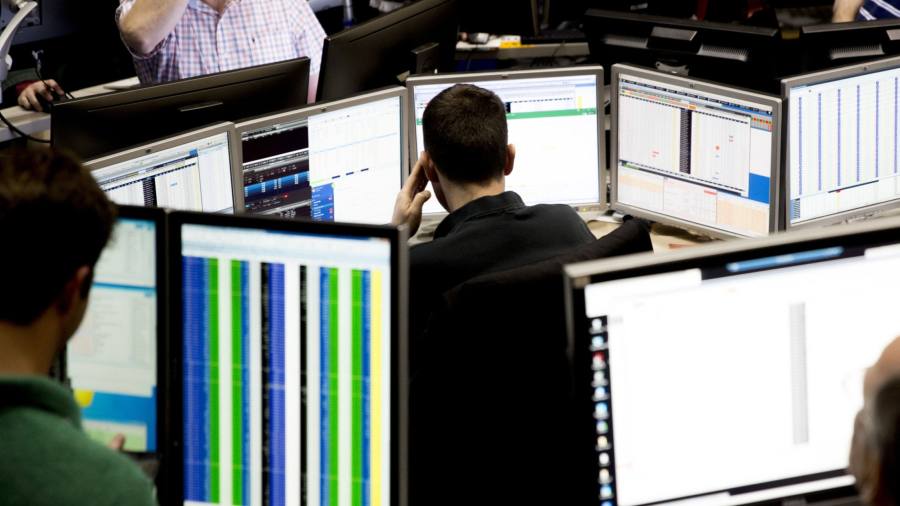The Vix — the volatility index popularly known as “Wall Street’s fear gauge” — is going through its biggest shake-up in years with the creation of a new version that will track expectations of short-term market swings.
The 1-day Volatility Index — or Vix1d — which will be launched by exchange group Cboe on Monday, is a response to a recent transformation in derivatives markets that had sparked concerns about the effectiveness and relevance of the original Vix.
It will measure expected volatility in the S&P 500 over the next day of trading, rather than over the next month like the Vix.
Rob Hocking, Cboe head of product innovation, said in an interview with the Financial Times that a surge in short-term options trading “provided a certain feel to the market that the 30-day just wasn’t capturing . . . we hope the shorter-dated index will match better”.
Almost half of trading in S&P 500 options so far this month has been in contracts that expire on the day they are traded. Such short-term contracts allow traders to take more targeted positions around events such as economic data releases or monetary policy meetings, but the activity is not included in the calculation of the main Vix.
Short-term trading volumes have almost quadrupled since the start of 2020, thanks in part to the addition of new contracts that allowed investors to make zero-day trades every day of the week.
Hocking said the original Vix was “still measuring exactly what it’s designed to measure”, but said “people were looking to it to give insight into moves that it was never designed to capture . . . [so] it made sense to add to the Vix complex”.
The Vix, which launched 30 years ago this month, helped to revolutionise US markets by distilling the prices of thousands of different options contracts into a single number that became shorthand for investor expectations of market volatility.
An average of about 750,000 Vix futures and options contracts a day were traded in 2022, and the index is closely followed by bankers as a signal for timing fundraising deals such as initial public offerings.
However, many observers have been surprised by how calm the index has been throughout the stock market downturn that began last year. Some investment funds that relied on a rising Vix to hedge against stock declines performed even worse than the wider S&P 500 in 2022. One senior IPO banker who used to use the index as a trigger for deal roadshows said “the Vix doesn’t work as an indicator right now”.
Options specialists said the indicator was not broken but had become so ubiquitous that it was often misused or oversimplified.
“It can often be misunderstood,” said Edward Monrad, head of market structure at Optiver, the Netherlands-based market maker. “It is in a sense a fairly narrow product, it’s . . . not a measure of what has happened or directionality in the [stock] index, which people assume it might be.”
The Vix tends to rise when stocks fall, but it can also jump if investors expect a sharp improvement in conditions. Conversely, if stocks fall slowly and steadily — like last year — the Vix may remain fairly low.
“The fear gauge moniker doesn’t help,” said Roni Israelov, chief investment officer at NDVR and a former manager of options strategies at AQR. “People were surprised by the performance of Vix futures-based strategies last year . . . [but] most of the year it was a slow grind down [in stock prices]. Given the underlying volatility of equities, it’s not clear that the Vix misbehaved.”
The Vix1d’s short-term focus is expected to make it much more volatile than the 30-day original. In the days following Silicon Valley Bank’s collapse last month, the Vix jumped from 19 to 26.5 — above its long-term average, but nowhere near the levels normally associated with panic. The Vix1d, in contrast, would have leapt from 15.3 to 40.2.
For now, the exchange has no plans to offer contracts tied directly to the one-day index. Hocking said settling trades linked to the shorter-term index would raise practical challenges, but added: “If there is demand we will always explore ways to effectively give the market ways to trade.”
Cboe already publishes a few alternative indices including a nine-day and one-year Vix, but they have struggled to hold the same level of attention as the original.
However, trading groups like Optiver have encouraged the creation of a new index and Hocking said it was developed “to answer customer demand”.
It is also a sign that the exchange expects the recent investor enthusiasm for short-term options to persist, despite concerns from some analysts and regulators that it could be distorting markets and causing sharp intraday market swings.
“[Short term options] is not just a fluke with one use case,” Hocking added. “There are a lot of different people using them, with different use cases . . . I don’t see all of those disappearing overnight.”
Read the full article here



